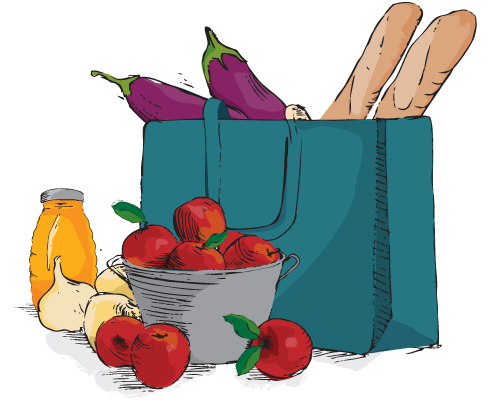
You’ve picked a perfect mix of produce from your local NY farmers market, what’s next? Follow these tips for making the most of your market purchases!
Spring Flavor Begins with Rhubarb!
Rhubarb is one of the first vegetables to arrive at the farmers market in the Spring. Its leaves can make you ill, but the stalks are a delicious tart flavor. Just by removing the leaves and using only the stalk, whether red or green, rhubarb makes a delicious sauce as a side dish or a great dessert.
Full Steam Ahead!
According to the American Heart Association, steaming vegetables is a healthy choice in meal preparation. If you choose to add oils, make sure they are low in saturated fats.
Sharing is Not Always Caring…
When it comes to sharing utensils and surfaces between different foods! Before preparing fruits and vegetables clean all surfaces and utensils after cutting raw meat, poultry, or seafood.
Don’t Always Peel Your Vegetables.
Most vegetables contain fiber in their peel or skin. For example, a baked potato with the skin left on has twice the amount of fiber as a peeled potato. In fact, cooking potatoes with the skin still on allows them to absorb more nutrients, even if you peel them after!
Plan to Can.
Canning food is a great way to enjoy your favorite fresh produce throughout the year. If you are going to can fruits and vegetables, it is recommended to do so within 6-12 hours after purchase. This will preserve freshness and nutritional value. For more information on how to can, take a look at USDA’s canning guide.
Proper Storage 101.
Not all fresh food belongs in the refrigerator! Follow this chart as a guideline for optimal taste and shelf life.
Room Temperature
Basil
Tomatoes
Potatoes, Sweet Potatoes, and Most Root Vegetables
Onions, Shallots
Garlic
Best in the Fridge
Apples
Leafy Greens (Lettuce, Kale, Collard Greens)
Berries
Cucumbers
Celery
Carrots
Broccoli
Mushrooms Need Breathing Room!
Never store mushrooms in an airtight container as they can grow harmful bacteria; instead, perforate a plastic bag or purchase ventilated bags. In fact, most fruits and vegetables keep best in a perforated plastic bag.
The Hype About Ripe.
When picked, fruit either continues to ripen afterwards or all growth is halted. The ripening process can be continued post-pick with tomatoes and apples: Place in a closed brown paper bag to promote ripening (thanks to natural gases emitted). Unfortunately, berries and grapes do not continue to grow.
Handle (and Clean) with Care:
Ready-to-Eat Produce in 4 Steps
Follow these steps to minimize your risk of a food-borne illness:
- Before washing produce, wash your hands! Use warm water and soap and do the “doctor wash”: Lightly scrub your fingernails on the opposite palm, and repeat on the other side, for at least 20 seconds total.
- Make sure your kitchen is clean: Used cutting boards, old sponges, dirty utensils or plates, and cluttered counters are all possible contamination sources. Scrub down your sink, too.
- Wash the produce directly under the faucet with cool water. If you have a spray nozzle, use this instead. Vigorously rub the produce with your hands or use a scrub brush. If using a brush, be sure it is clean! Experts suggest that produce wash products do not improve the cleaning process.
- If you pre-cut or peel your produce, it must be stored in the refrigerator or frozen. Some fruits and vegetables (see above) can be stored in a clean bowl out in the open. If you refrigerate your produce, ensure it’s kept at 40 degrees or below (FDA recommendation).